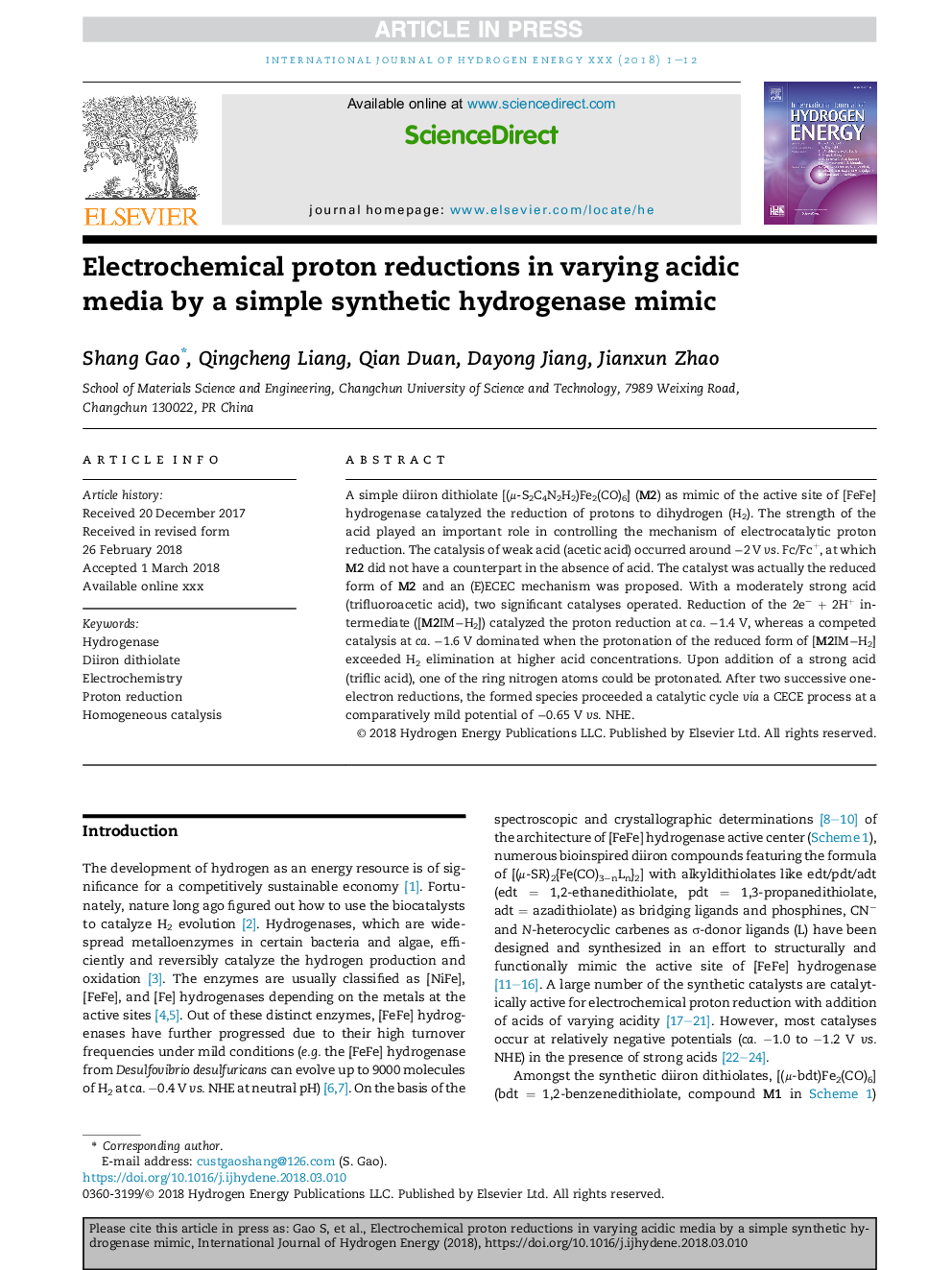| Article ID | Journal | Published Year | Pages | File Type |
|---|---|---|---|---|
| 7706516 | International Journal of Hydrogen Energy | 2018 | 12 Pages |
Abstract
A simple diiron dithiolate [(μ-S2C4N2H2)Fe2(CO)6] (M2) as mimic of the active site of [FeFe] hydrogenase catalyzed the reduction of protons to dihydrogen (H2). The strength of the acid played an important role in controlling the mechanism of electrocatalytic proton reduction. The catalysis of weak acid (acetic acid) occurred around â2 V vs. Fc/Fc+, at which M2 did not have a counterpart in the absence of acid. The catalyst was actually the reduced form of M2 and an (E)ECEC mechanism was proposed. With a moderately strong acid (trifluoroacetic acid), two significant catalyses operated. Reduction of the 2e- + 2H+ intermediate ([M2IMâH2]) catalyzed the proton reduction at ca. â1.4 V, whereas a competed catalysis at ca. â1.6 V dominated when the protonation of the reduced form of [M2IMâH2] exceeded H2 elimination at higher acid concentrations. Upon addition of a strong acid (triflic acid), one of the ring nitrogen atoms could be protonated. After two successive one-electron reductions, the formed species proceeded a catalytic cycle via a CECE process at a comparatively mild potential of â0.65 V vs. NHE.
Related Topics
Physical Sciences and Engineering
Chemistry
Electrochemistry
Authors
Shang Gao, Qingcheng Liang, Qian Duan, Dayong Jiang, Jianxun Zhao,
